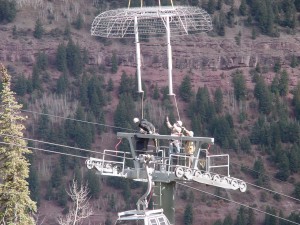- We Prevent Lightning Related Problems.

Lightning should not be taken lightly: 3 struck, killed last week in US
July 23, 2018
Microsoft Blames “Severe Weather” for Azure Cloud Outage
September 26, 2018Lightning Strike Shuts Down Gondola System Leaving Tourists Stranded for Hours

It was recently reported that in the United States 35 million people board public transit systems each weekday. In 2011, Americans took over 10.2 billion trips on public transportation. Considering these numbers it becomes even more important to assess transportation safety and leave nothing to chance. Trains, planes, boats and automobiles are of course the most commonly thought of types of public transportation. We hear of planes and ships getting hit by lightning all the time and last year in China a bullet train was struck leading to one of the largest transportation disasters in the China’s history. Gondolas, however, although commonly used in mountainous regions and at ski resorts are not as commonly known, but more abundant than you know and used year around. They are also much more vulnerable due to their height and the geological make-up of where they are located. Electrical discharges from lightning can and do compromise cable-propelled transit systems, virtually making them useless, while also threatening passengers’ safety aboard the cable cars.
Recently in Salzburg, Austria, a gondola system was shut down due to a lightning strike, leaving about 150 people stranded while visiting the Eisriesenwelt ice caves. Thankfully, when the lightning struck, the cable car was unoccupied. The tourists were led down the mountain by guides from the ice caves via a steep 500 meter path. Elderly and disabled sightseers were taken down in the gondola in emergency mode. One German tourist suffered a leg injury during her descent and was carried down via stretcher. The remaining tourists returned to the lodge safely, 2.5 hours later. Should the gondola system have been utilizing lightning protection and prevention systems, these tourists would not have been stranded atop the icy mountain.

In contrast, Telluride Transit Gondola Company sees the importance of protecting their 2.25 million passengers (annually) and eliminating the threat of lightning strikes to their 8 mile public transit and ski lift systems, between the town of Telluride and Mountain Village, Colorado. This Colorado area averages 7,300 Cloud to Ground (CG) lightning strikes per year. Prior to installing Lightning
LEC’s lightning elimination system at Telluride minimizes downtime due to storms. Telluride’s local economy depends a great deal on its annual tourists, so getting people to their destinations faster gives them more time on the ground, which, in turn, benefits the local economy.
LEC is dedicated to providing integrated, industrial lightning protection and prevention solutions, products and services by utilizing innovative, patented charge transfer technology, grounding systems engineering, surge protection, design and comprehensive consulting resources based on physics combined with state-of-the-art engineering principles. To date, LEC has installed over 3000 solutions in over 69 countries and throughout the United States. The company’s patented DAS™ technology has proven to be more than 99.7% effective in eliminating all strikes to protected areas.

